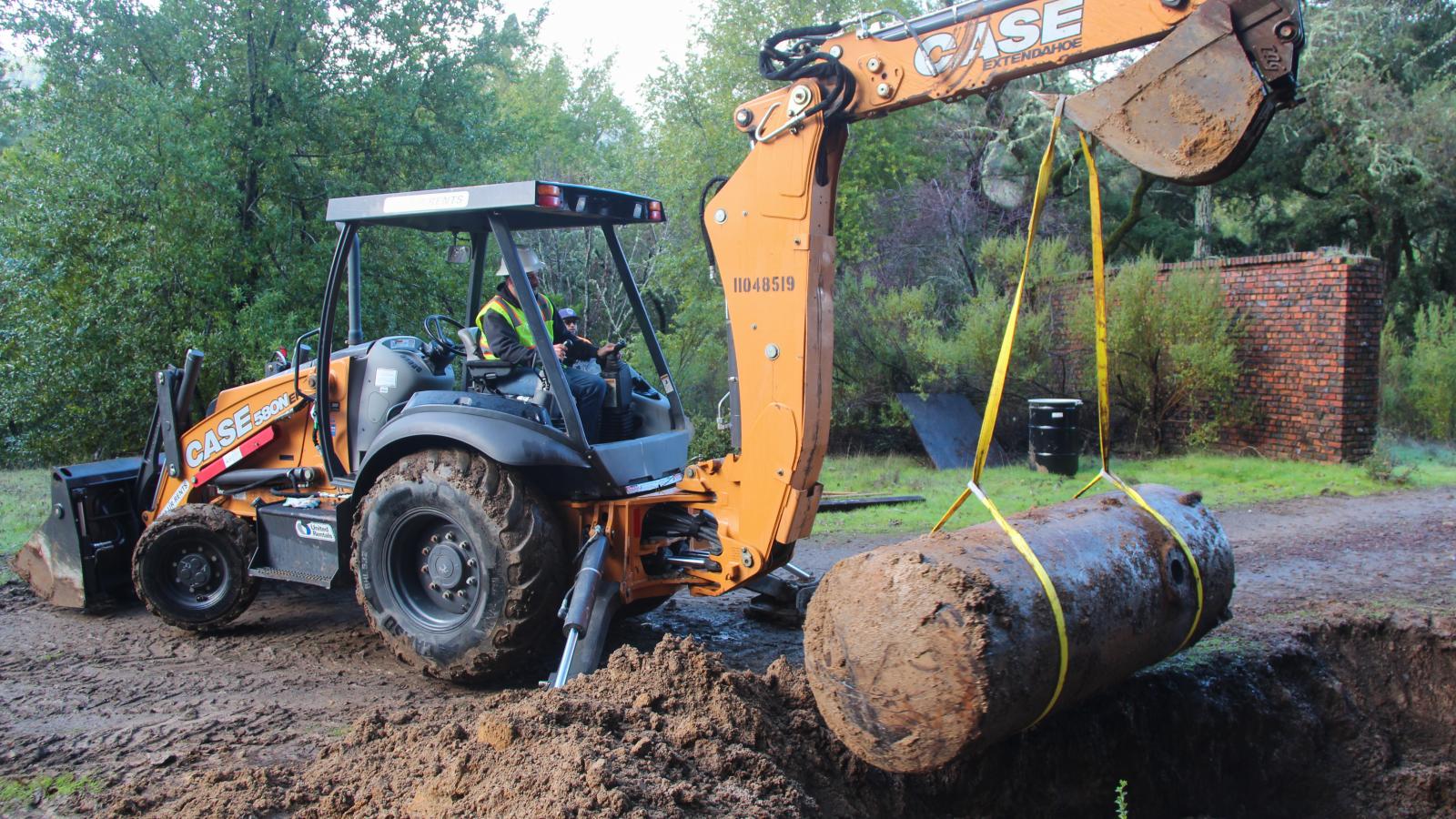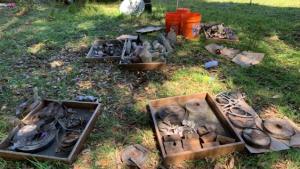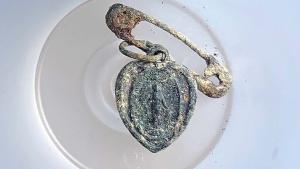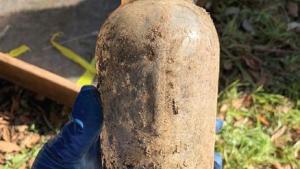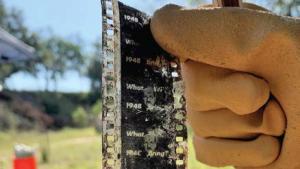When Midpen acquired Bear Creek Redwoods in 1999, the land had been heavily used and manipulated by human hands including Gold Rush-era logging mills, Dr. Harry Tevis’s grand estate and botanic wonderland in the early 1900s and Alma College, a seminary for priests-in-training in the 1930s.
While a former carport that now serves as bat habitat provides a visible marker of Tevis’s once-palatial estate, and the remaining Marian Shrine reminds visitors of the former Alma College, other evidence of use has been buried deep: including in a once-active landfill filled with artifacts from the lives of prior inhabitants.
As part of Midpen’s mission to reclaim natural areas and restore the land’s natural functions to support a healthy thriving ecosystem, staff recently completed the cleanup of this old landfill discovered within the preserve. The cleanup involved two distinct efforts: systematically collecting and documenting as many historic artifacts as possible, and removing contaminated soil and other hazardous waste.
The landfill was located near an old worker’s village, built by Tevis to support his estate and house the nearly 100-member staff. The village included living quarters, greenhouses, storage buildings, garages, a barn and carport. When the Jesuits assumed control of the area, a book binding and print shop were set up. These activities resulted in a considerable amount of waste which was regrettably burned and dumped into a nearby ravine.
“The location is incredibly interesting and revealed some treasures from the past,” said Midpen project manager Zachary Alexander. “Unfortunately, most of them were covered in thousands of pounds of contaminated soil.”
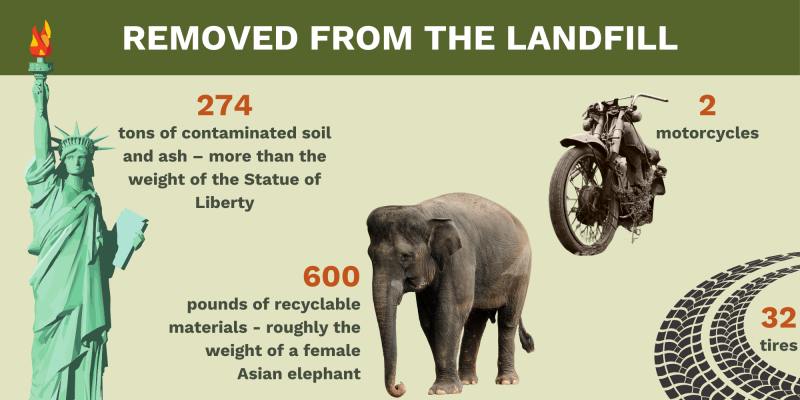
In a cleanup process that began in 2022, crews collected nearly 3,500 artifacts. Glass, ceramic and metal food and beverage containers and tableware were most common. Other items that were unearthed include newsreels and films, buttons and buckles, shoes, silverware, pharmaceutical containers, personal hygiene products and writing ink.
Unearthed Artifacts
The curated items have been transferred to Sonoma State University to be catalogued, stored in a secure, climate-controlled facility and utilized for research.
The work then turned to removing the leftover waste. Diesel, motor oil and asbestos were identified within the dump and former village site.
Before finishing up, crews had one more obstacle: a 1,200-pound underground diesel tank that had to be excavated and removed. Crews drained nearly 500 gallons of diluted diesel and removed the tank to prevent seepage of pollutants into nearby creeks.
Bear Creek Redwoods is in the Guadalupe watershed, meaning the waters of most creeks and tributaries flow into the Lexington Reservoir. The water in Lexington Reservoir is used to replenish groundwater supplies and serves as an integral component of Santa Clara Valley’s water supply.
This project was funded in part by Measure AA, Midpen’s 30-year $300 million bond. Passed in 2014, this bond included the funding necessary to open Bear Creek Redwoods Preserve to the public in 2019 as well as construct additional trails and control non-native invasive plants such as French broom, Italian thistle and stinkwort.
“By restoring natural open space lands, we are helping to protect public health and safety, and the health of our native plants and wildlife. We know California newts and western pond turtles inhabit this preserve, so removing these pollutants will certainly benefit these species and others downstream,” Alexander said.
Visit Bear Creek Redwoods Preserve to learn more through the interpretive signs there, or take the journey online.

